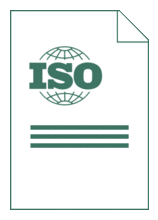Standards Worldwide
Standards Worldwide
Phone +49 30 58885700-07

Standard [CURRENT]
ISO 8820-2:2014-02
Road vehicles - Fuse-links - Part 2: User guidelines
- German title
- Straßenfahrzeuge - Sicherungseinsätze - Teil 2: Benutzerhandbuch
- Publication date
- 2014-02
- Original language
- English
- Pages
- 14
- Publication date
- 2014-02
- Original language
- English
- Pages
- 14
Product information on this site:
Quick delivery via download or delivery service
Buy securely with a credit card or pay upon receipt of invoice
All transactions are encrypted
Content
Content (en)
- Foreword
- Scope
- Normative references
- Terms and definitions
- Rated voltage and system voltage
- Rated current and continuous current
- Cold resistance
- Current and conductors
- Current and contact resistance
- Current and ambient temperature
- Cable protection versus time-current characteristics
- Selectivity
- Replacement of fuse-links
- Voltage peaks during opening of fuse-links
- Inrush withstand characteristics of fuse-links
- Electromagnetic compatibility (EMC)
- Parameters for the selection of fuse-links in road vehicles (informative)
- Selection criteria for fuse-links and cables (normative)
ICS
43.040.10
Replacement amendments
This document replaces ISO 8820-2:2005-04 .
Loading recommended items...
Loading recommended items...
Loading recommended items...
